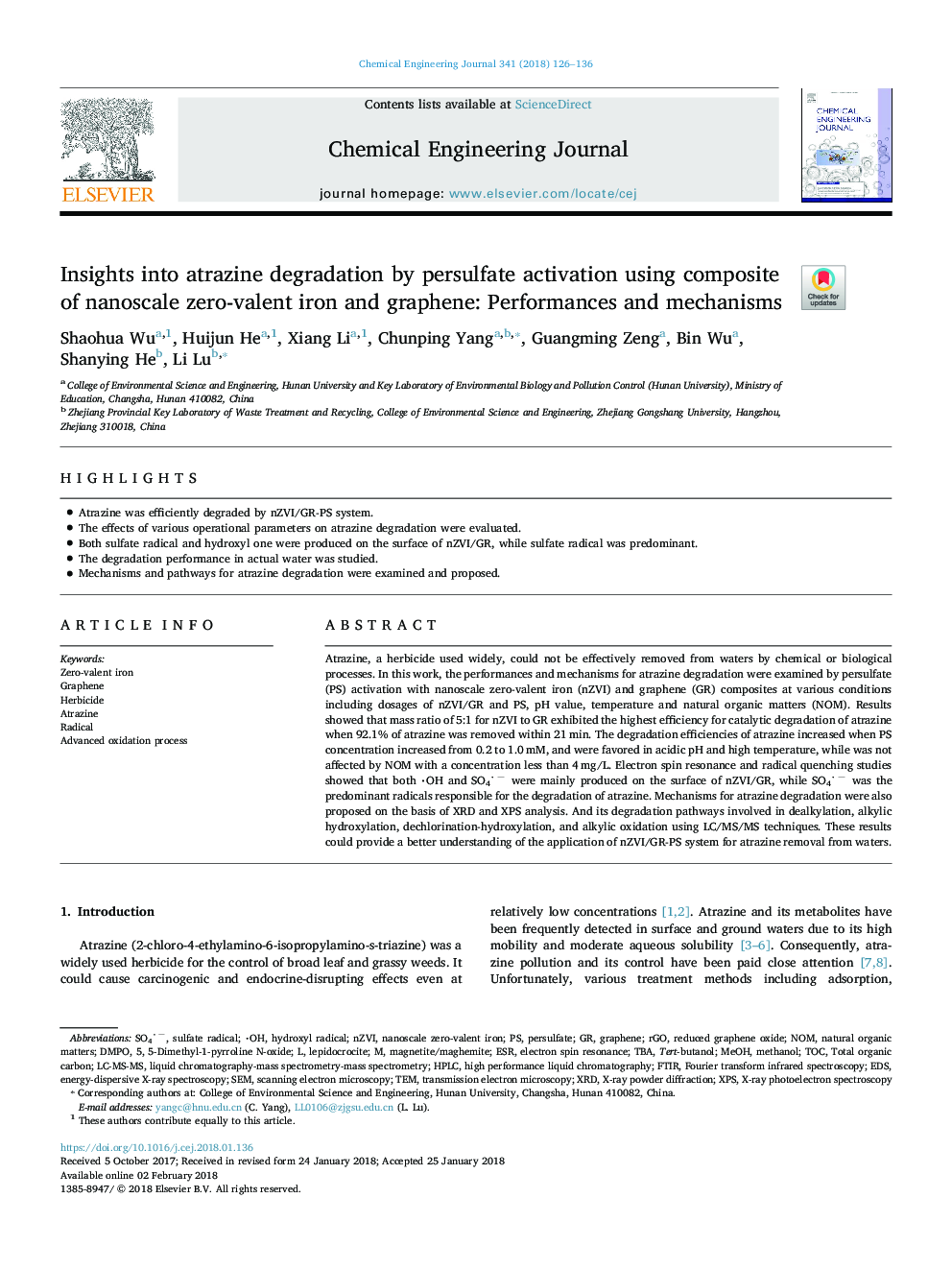| Article ID | Journal | Published Year | Pages | File Type |
|---|---|---|---|---|
| 6579782 | Chemical Engineering Journal | 2018 | 11 Pages |
Abstract
Atrazine, a herbicide used widely, could not be effectively removed from waters by chemical or biological processes. In this work, the performances and mechanisms for atrazine degradation were examined by persulfate (PS) activation with nanoscale zero-valent iron (nZVI) and graphene (GR) composites at various conditions including dosages of nZVI/GR and PS, pH value, temperature and natural organic matters (NOM). Results showed that mass ratio of 5:1 for nZVI to GR exhibited the highest efficiency for catalytic degradation of atrazine when 92.1% of atrazine was removed within 21â¯min. The degradation efficiencies of atrazine increased when PS concentration increased from 0.2 to 1.0â¯mM, and were favored in acidic pH and high temperature, while was not affected by NOM with a concentration less than 4â¯mg/L. Electron spin resonance and radical quenching studies showed that both OH and SO4â were mainly produced on the surface of nZVI/GR, while SO4â was the predominant radicals responsible for the degradation of atrazine. Mechanisms for atrazine degradation were also proposed on the basis of XRD and XPS analysis. And its degradation pathways involved in dealkylation, alkylic hydroxylation, dechlorination-hydroxylation, and alkylic oxidation using LC/MS/MS techniques. These results could provide a better understanding of the application of nZVI/GR-PS system for atrazine removal from waters.
Keywords
SO4−DMPOLC-MS-MSTBATOCEDSESRLepidocrociterGOatrazineZero-valent ironnanoscale zero-valent ironEnergy-Dispersive X-ray SpectroscopyRadicalReduced graphene oxideTemTert-butanolnZVISulfate radicalHydroxyl radicalElectron spin resonanceFTIRX-ray photoelectron spectroscopyFourier transform infrared spectroscopyXPSHerbicideAdvanced oxidation processMethanolSEMNatural organic mattersMeOHScanning electron microscopyTransmission electron microscopyNOMXRDX-ray powder diffractionPersulfatehigh performance liquid chromatographyHPLCTotal organic carbonGraphene
Related Topics
Physical Sciences and Engineering
Chemical Engineering
Chemical Engineering (General)
Authors
Shaohua Wu, Huijun He, Xiang Li, Chunping Yang, Guangming Zeng, Bin Wu, Shanying He, Li Lu,
